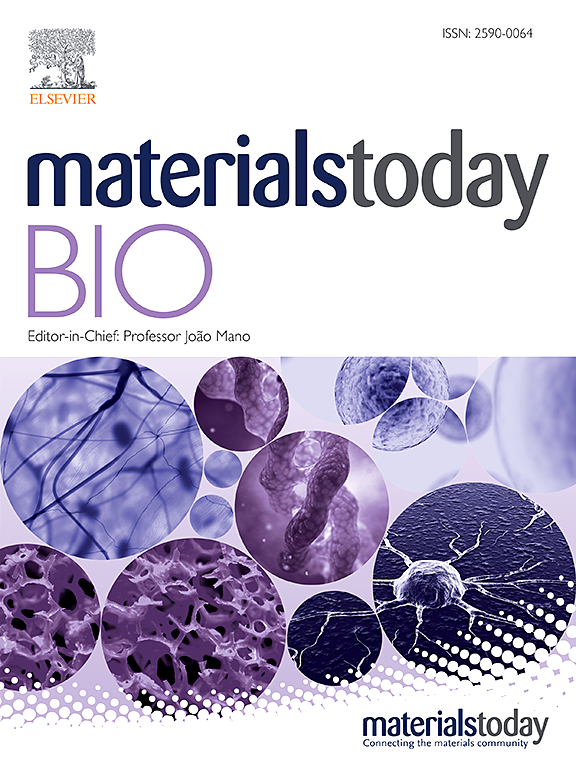Multifunctional drug delivery nanoparticles for combined chemotherapy/chemodynamic/photothermal therapy against colorectal cancer through synergistic cuproptosis/ferroptosis/apoptosis
IF 8.7
1区 医学
Q1 ENGINEERING, BIOMEDICAL
引用次数: 0
Abstract
The use of combination therapies that employ a variety of cell death mechanisms has emerged as a promising avenue of research in the treatment of cancer. However, the optimization of therapeutic synergies when integrating different modes remains a significant challenge. To this end, we developed a multifunctional intelligent drug-carrying nanoparticle (DFMTCH NPs) based on the metal-organic framework MIL-100, loaded with doxorubicin (DOX) and disulfiram (DSF), coated with a Cu-tannic acid (Cu-TA) network and hyaluronic acid (HA), for the purpose of combined chemotherapy/chemodynamic/photothermal anti-cancer therapy. On the one hand, the DFMTCH NPs exhibited a range of therapeutic capabilities, including chemotherapy, photothermal therapy (PTT), and chemodynamic therapy (CDT), which collectively enhanced the anti-tumor efficacy of chemotherapeutic agents. In addition, DFMTCH NPs proved sensitive photoacoustic imaging (PAI) in image-guided therapy. On the other hand, DFMTCH NPs could produce reactive oxygen species (ROS) and consume glutathione (GSH) by amplifying cellular oxidative stress, while causing intracellular mitochondrial dysfunction, inducing effective cuproptosis/ferroptosis/apoptosis to inhibit tumor growth. Collectively, this work provided an innovative strategy for designing multifunctional nanoparticles for effective combination therapies to combat colorectal cancer (CRC).

求助全文
约1分钟内获得全文
求助全文
来源期刊

Materials Today Bio
Multiple-
CiteScore
8.30
自引率
4.90%
发文量
303
审稿时长
30 days
期刊介绍:
Materials Today Bio is a multidisciplinary journal that specializes in the intersection between biology and materials science, chemistry, physics, engineering, and medicine. It covers various aspects such as the design and assembly of new structures, their interaction with biological systems, functionalization, bioimaging, therapies, and diagnostics in healthcare. The journal aims to showcase the most significant advancements and discoveries in this field. As part of the Materials Today family, Materials Today Bio provides rigorous peer review, quick decision-making, and high visibility for authors. It is indexed in Scopus, PubMed Central, Emerging Sources, Citation Index (ESCI), and Directory of Open Access Journals (DOAJ).
文献相关原料
公司名称
产品信息
阿拉丁
DOX
阿拉丁
5,5′-Dithio bis-(2-nitrobenzoic acid) (DTNB)
阿拉丁
methylene blue (MB)
阿拉丁
tannic acid (TA)
阿拉丁
FeCl3·6H2O
阿拉丁
1,3,5-Benzenetricarboxylic acid (BTC)
 求助内容:
求助内容: 应助结果提醒方式:
应助结果提醒方式:


